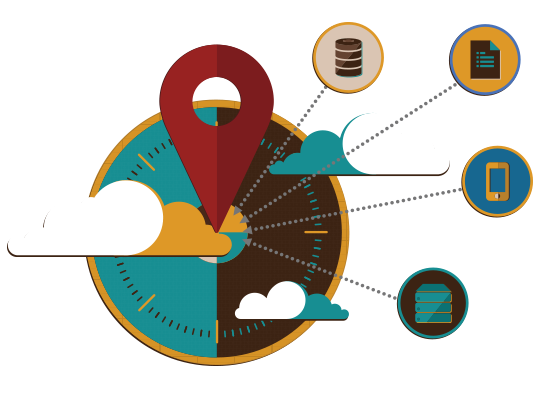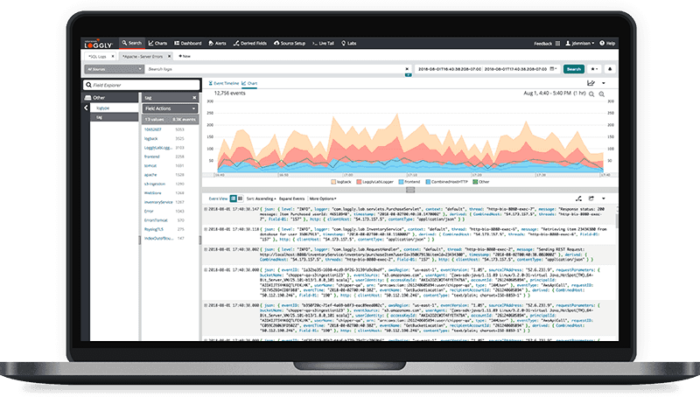Technical Resources
Educational Resources
APM Integrated Experience
Connect with Us
Log generation is now a normal aspect of any application. Logs are an essential part of each application and must be managed, but many developers and organizations underestimate their value. They often store logs just to have them, but logs are valuable pieces of information capable of communicating important metrics such as fault rate or availability.
You can also analyze logs to reveal patterns. These patterns are extremely valuable, as they can help you understand the behavior of your users. This allows you to improve your products in an optimal way, delivering features your users find helpful. Additionally, you can combine logs with trend analysis to shift from reactive to proactive monitoring.
To get the most value out of your logs, they must be aggregated in a central location. Because every application generates logs, it’s not easy to analyze them when you and others have spread them out among many applications and storage volumes. With the rise of microservices, you likely have many small applications generating logs. Therefore, the value of centralized logging has become increasingly important.
This article will guide you through the importance of centralized logging and how SolarWinds® Loggly® can help you gain access to it.
Logs have become a crucial part of improving the performance of your applications, monitoring user behavior, and tracking important metrics. Here are four important reasons why centralized logging is a must for your architecture.

If you want to comply with IT security standards, centralized logging is necessary. Security standards such as PCI DSS, ISO 27002, and COBIT require log aggregation. Because these standards decided to include centralized logging, logging grew from a niche industry into a big part of the software development industry. However, even if you aren’t following these standards, you should still consider centralized logging to reap its benefits.
It’s not always easy to separate legitimate warnings from the abundance of logs your application throws at you. It’s inefficient to research every warning to see whether something’s wrong. You don’t want to be looking through hundreds of warnings when only 1% of them are legitimate and the rest are noise.
Log aggregation can help you normalize logs and filter out meaningless warnings. Log aggregation tools like Loggly can help you detect anomalies and find meaningful warnings requiring further investigation.
In short, log aggregation can help your organization cut out the noise and focus on the signal.
Centralized logging makes it significantly easier for your developers to debug problems. It gives them a full, detailed path of all the events leading up to the issue, and this information is critical for understanding what went wrong and how to resolve it. Essentially, the logs tell a story of how the user interacted with the application and when they experienced an issue.
To give an example, let’s say a user wants to reset their password. The user inputs their email address, and the system sends a recovery email. The application logs these actions.
Next, the user clicks the recovery link, but they end up at a 404 page. Without logs, you’d be guessing which actions the user executed. With centralized logging, however, you can easily track all the actions the user performed leading up to the logged warning.
Centralized logging makes developers’ lives easier because they can spend less time finding the right logs and can resolve issues much faster. Faster issue resolution saves your organization money, and it allows developers to focus their efforts on more important tasks, such as developing new features.
By aggregating logs, you get a better system-wide overview, as logs can tell you about the overall health of your applications. For example, an application printing many warning logs might need further investigation to see whether something’s wrong.
Next, let’s learn how centralized logging and trend analysis can help you shift toward proactive monitoring.
First, it’s important to understand the meaning of log analysis. Here’s a definition according to Wikipedia: “Trend analysis is the widespread practice of collecting information and attempting to spot a pattern. Trend analysis is often used to predict future events. Trend analysis often refers to techniques for extracting an underlying pattern of behavior in a time series that would otherwise be partly or nearly completely hidden by noise.”
Trend analysis is clearly suitable for logs, as you need to cut through the noise. Additionally, it helps you predict future failures.
The trend analysis tool in Loggly allows you to shift from reactive to proactive monitoring. A trend analysis tool can help you predict future failures by analyzing logs. Trend analysis can detect patterns potentially leading to future failures.
Combining trend analysis with centralized logging helps make sure you receive fewer warnings. The trend analysis tool in Loggly can tell you about potential issues so you can react and resolve them before a user experiences a failure. This is an important aspect of proactive monitoring, as it helps improve the user experience.
Next, let’s learn how you can use the trend analysis tool in Loggly and which trend types it offers.
Loggly helps you with centralized logging, allowing you to view your logs in one dashboard. In addition, Loggly helps you make these logs discoverable.
But the biggest value of Loggly is in its trend analysis. Loggly helps you visualize logs in various ways to make it easier to find patterns, which is why Loggly offers different charting and filtering options. Additionally, Loggly gives you the ability to zoom in and out on different time periods. Sometimes, it’s easier to take a step back to spot a pattern.

Let’s look at some of the options Loggly offers.
“Can you make things as simple as possible?” you ask. The simplest view is the timeline view. This view shows you the number of logs for a specified time. For example, you might notice the number of warning logs started to increase at a certain point; this might indicate something’s wrong.
“Can Loggly help me see when something started to go wrong?” you ask. Loggly offers a pie chart view to visualize log attributes. The most common example here is visualizing the percentage of the pie chart comprised by each log level. You usually want to have a pie chart with mostly “info” level logs and few “warning” or “error” level logs.
Again, if the proportions of the pie chart change, this might indicate something’s wrong. If you prefer, you can also view the same data in a bar chart.
“I just want to focus on one thing,” you say. You can display single-value trends with Loggly. For example, you can display the average number of logs processed over a selected time range.
Centralized logging matters. It allows your organization to save time analyzing warnings, and when you combine log aggregation with trend analysis, you can shift from reactive monitoring to proactive monitoring. This allows your organization to decrease the number of warnings it receives, as trend analysis can help you detect issues earlier and resolve them more quickly.
If you want to learn more about the trend analysis tools in Loggly, read the following article about the visualizations it offers. Want to learn more about Loggly? Check out the product at Loggly.com.
This post was written by Michiel Mulders. Michiel is a passionate blockchain developer who loves writing technical content. He also loves learning about marketing, UX psychology, and entrepreneurship. When he’s not writing, he’s probably enjoying a Belgian beer.